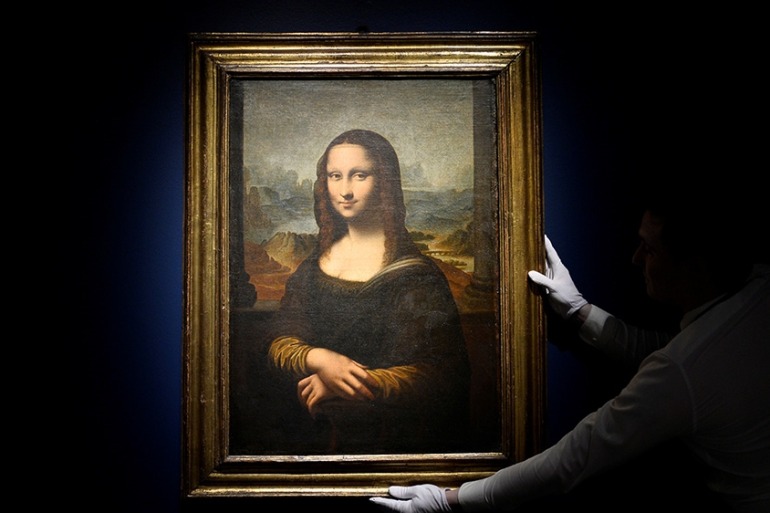The Enduring Fame of the Mona Lisa: A Global Icon
The Mona Lisa, painted by Leonardo da Vinci in the early 16th century, is perhaps the most famous and recognized artwork in the world. Housed in the Louvre Museum in Paris, this masterpiece attracts millions of visitors annually, each eager to glimpse her enigmatic smile. But what makes this painting so famous and why has it remained an enduring icon for centuries?
The Artist Behind the Masterpiece: Leonardo da Vinci
One cannot talk about the Mona Lisa without acknowledging its creator, Leonardo da Vinci, one of the greatest minds of the Renaissance. As a polymath, da Vinci excelled in many fields—art, science, engineering, and anatomy. His deep understanding of the human form, combined with his groundbreaking techniques in painting, enabled him to create works of art that continue to captivate audiences.
Da Vinci’s fame plays a crucial role in the Mona Lisa’s global recognition. His reputation as a genius elevates the importance of all his works, but the Mona Lisa stands out as the pinnacle of his artistic achievements. Painted between 1503 and 1506, it was intended to be a portrait of Lisa Gherardini, a Florentine woman. However, it became much more than just a portrait; it evolved into a symbol of artistic perfection.
The Enigmatic Smile: A Mystery in Art
One of the most captivating aspects of the Mona Lisa is her enigmatic smile. The expression has been the subject of endless speculation, interpretation, and fascination. The smile seems to change depending on the viewer’s perspective and angle. At one glance, she may appear serene, while at another, there’s a hint of mystery or even mischief.
This ambiguity has been studied extensively by art historians, psychologists, and even scientists. Leonardo da Vinci’s mastery of the sfumato technique—a method of blending colors and tones to create soft transitions—plays a significant role in this effect. By avoiding hard lines, da Vinci managed to give the face a lifelike and ambiguous quality, which has made it the subject of fascination for centuries.
A Painting with a Storied History
The Mona Lisa’s fame is not only due to its artistic merits but also its dramatic history. In 1911, the painting was stolen from the Louvre Museum, which led to a worldwide frenzy. The media coverage surrounding the theft made headlines across the globe, and the painting’s notoriety grew exponentially during the two years it was missing. When it was finally recovered, the Mona Lisa had ascended to an almost mythic status.
Adding to its allure, the painting has survived through wars, including World War II, when it was hidden to protect it from being looted by the Nazis. Every major event in the Mona Lisa’s history has only served to bolster its fame and mystique, making it not just a piece of art but a symbol of endurance and survival.
The Role of the Louvre and Modern Media
Another key factor in the Mona Lisa’s fame is its prominent display in the Louvre, one of the most visited museums in the world. The painting has become the centerpiece of the museum’s collection, and the way it is presented, encased in bulletproof glass and surrounded by hordes of admirers, further enhances its aura of untouchability and significance.
Modern media has also played a pivotal role in cementing the Mona Lisa’s position as the most famous painting in the world. From countless reproductions and parodies to its appearance in popular culture, the painting is omnipresent. Whether it’s used in advertisements, movies, or even on souvenirs, the Mona Lisa has transcended the art world to become a cultural icon.
In the age of social media, visitors to the Louvre often take selfies with the painting in the background, further spreading its image across the globe. The Mona Lisa’s fame has thus become a self-perpetuating cycle: the more people see it, the more it is talked about, and the more its importance grows.
Symbolism and Cultural Impact
The Mona Lisa has also been interpreted as a symbol of femininity, mystery, and power. Over time, scholars and art enthusiasts have attributed various meanings to the painting, seeing it as a representation of the ideal Renaissance woman, a muse, or even a hidden self-portrait of Leonardo da Vinci.
Its impact extends beyond the world of art. Many modern thinkers consider the Mona Lisa as a bridge between classical art and modernity. Its simplicity yet complexity mirrors the duality of the human experience—beauty and imperfection, reality and illusion. This timeless quality resonates with people from different cultures and backgrounds, making it a universal piece of art.
Conclusion: Why the Mona Lisa Endures
In the end, the Mona Lisa’s fame can be attributed to a combination of factors—Leonardo da Vinci’s genius, the painting’s technical brilliance, its enigmatic quality, and its storied past. Moreover, its ongoing presence in media and culture continually renews interest in the painting.
It is this perfect storm of artistic mastery, historical intrigue, and modern exposure that has made the Mona Lisa more than just a painting—it is an enduring symbol of human creativity and expression. The next time you stand before her at the Louvre, remember that you are not just looking at a portrait, but a piece of history that has captivated the world for over 500 years.
editor's pick
latest video
news via inbox
Nulla turp dis cursus. Integer liberos euismod pretium faucibua






